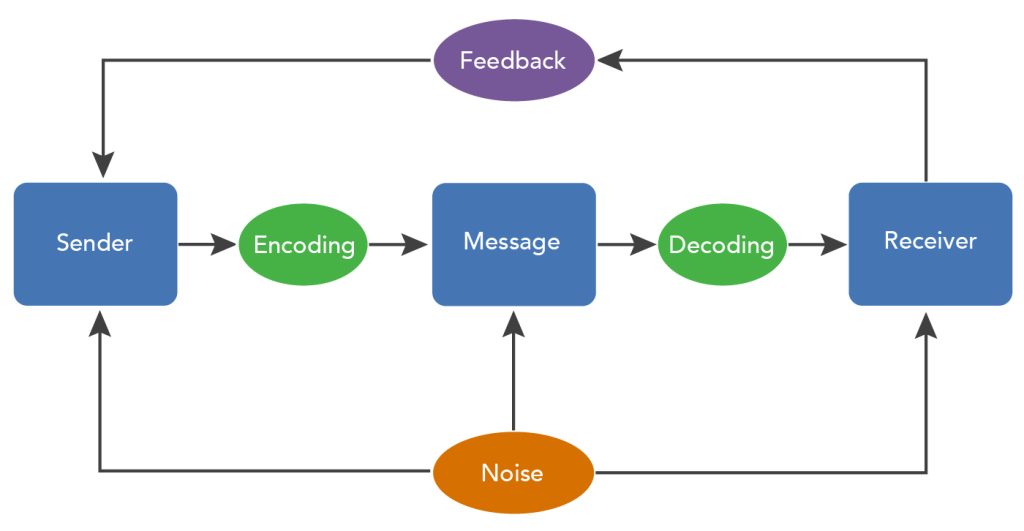16.3 The Communication Process

Earlier we looked at how important it is to follow the course communication expectations when formatting your emails to professors. This is the preferred method of communication with your Fanshawe contacts and maintains a record of communication. That means your ability to communicate effectively will depend on your ability to check your Fanshawe Online email daily.
What is required in every email subject line? If you don’t remember, check your course communications expectations posted on your course site.
In the previous chapter, we learned about the various ways we are different and in this chapter, we will consider how these differences can impact how well we communicate.
To begin with, let’s look at the following definition of communication:
“A process by which information is exchanged between individuals through a common system of symbols, signs, or behavior”
(Merriam-Webster. n.d.)
In its most simple terms, communication happens when there is at least one sender and one recipient, and in between, there is the message.
The diagram below provides additional details that are important to consider if we want to be able to communicate effectively.
If your professor has encoded the information they want you to know in a language you do not understand (the language of math, diagrams, gestures, words, etc.) you (the receiver) will have trouble decoding the message, and may provide feedback to the sender by using a confused face.
Communication is only effective if the sender encodes information in a way the receiver can decode it. Since we discovered throughout the text that we are all different, how can we improve the chance that our message is received and understood?
What about the part of this diagram that says “noise“? Noise is what gets in the way of the message getting through. It could be actual noise interference (like a loud argument in the hallway) but it could also be the speaker mumbling, the receiver being stressed out and thinking about something else, or anything else that prevents the clear transmission of the message or ability to decode it.

Our ability to communicate can be improved if we consider the following:
- Messages can be sent vocally—voice, phone, face-to-face, over radio or television. It can come to us in a written format such as correspondence or printed or digital media. We obtain information visually in logos, pictures, maps, menus, and street signs. And, of course, we find ourselves learning things non-verbally by observing body language, tone of voice, gestures, and so forth.
- The kind of communication tool you choose to use also has an effect on the message being conveyed. Will you choose a pencil? Pen? Phone? Email? Text? Picture? Or perhaps a face-to-face opportunity? Whatever you choose as your method of communicating with one person or a group of people guides how effectively you send your message.

© Fanshawe College - Communication may also include an emotions behind a message. You could just be sharing a picture of yourself on the beach or sending out a call for help on a class assignment, or perhaps feeling sad because a friend is sick. Each of these would affect how you might communicate.
- Additionally, there are other significant variables that play an important role in communicating, from ethnicity to culture to age to gender and are meaningful to what one is trying to “say” to someone else. Unfortunately, sometimes the message is lost or misconstrued because neither the sender nor the receiver has taken into account these important aspects of successful communication.
One way we can improve our ability to communicate is to become an active listener and effective speaker which we will review in the next two sections.
“6.2 The Communication Process” from Fanshawe SOAR by Kristen Cavanagh is licensed under a Creative Commons Attribution-NonCommercial-ShareAlike 4.0 International License, except where otherwise noted.

